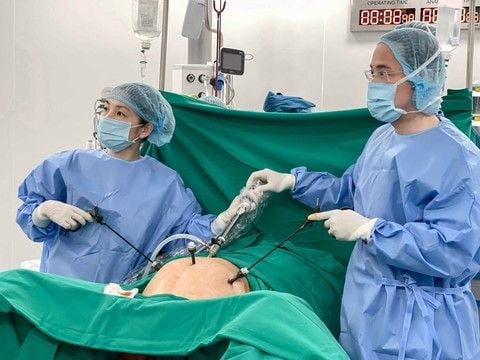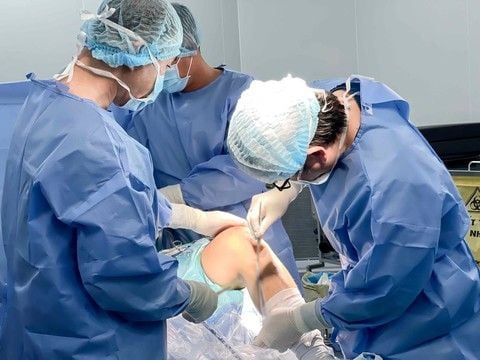Snails are found everywhere, and while most gardeners dislike them, in some places they are considered a delicacy. Although they may be bothersome to many, snails are consumed worldwide and are known to be very healthy. The following article will help you understand whether eating snails is good for your health.
1. Quick Information about Snails
- Scientific Name: Gastropoda
- Common Name/English: Gastropod, slug, snail
Key nutrients:
- Magnesium (Mg): 212 mg (50.48%)
- Manganese (Mn): 23.3 mg (1013.04%)
- Copper (Cu): 0.34 mg (37.78%)
- Iron (Fe): 2.98 mg (37.25%)
- Phosphorus (P): 231 mg (33.00%)
- Vitamin E (alpha-tocopherol): 4.25 mg (28.33%)
- Protein: 13.69 g (27.38%)
- Vitamin B12 (Cobalamin): 0.42 μg (17.50%)
- Choline: 55.2 mg (10.04%)
- Vitamin B6 (Pyridoxine): 0.111 mg (8.54%)
Health Benefits: Snails are the largest subgroup of mollusks, with 10,000 species and 400 families. They are found worldwide in both aquatic and terrestrial environments. Most aquatic and marine animals are benthic creatures, with a few being able to swim. Some species of snails have fully enclosed shells, while others, like nudibranchs, are colorful to blend with their environment and signal predators about their toxic taste.
Snails have a true foot and their bodies are divided into three parts: head, foot muscles, and organ systems that include respiration, circulation, excretion, digestion, reproduction, and nervous transmission. Their body plan is twisted or coiled as the larval mass rotates 180 degrees compared to the head, and the mantle cavity moves to the front of the animal. The kidney, anus, and gills are located near the front. Most snails are herbivores in nature, although some marine species and a few terrestrial ones can be carnivores or omnivores. Snails use their radula (a chitinous structure with tiny hooks called cuticula) to break down food, which is then passed through their digestive system.
Snails have 1-2 pairs of tentacles on their heads. In land snails, eyes are found on the first pair of tentacles, and their width is about 75% the width of the eyes. The second pair of tentacles functions as sensory organs for smell. Land snails possess both sets of tentacles. Snails also have brain ganglia, forming a primitive type of brain divided into four parts. This structure is simple compared to the brains of mammals, birds, and reptiles. Snails are capable of associative learning.

They move by alternating body contractions, stretching at a slow speed of 1 millimeter per second. They produce mucus to aid movement by reducing friction. The mucus also reduces the risk of injury to the snail. They have a shell that covers the internal organs, called the foot.
Snail meat is considered a high-quality food that contains a lot of protein and is also an excellent source of iron. It contains 15% protein, 80% water, and 2.4% fat, making it a food alternative for those requiring a low-fat, high-protein diet. Snails are rich in essential fatty acids, such as linoleic acid and linolenic acid.
- Diet: In nature, snails consume a variety of foods, including fruits, leafy vegetation, decomposed matter, and feces. They cause damage to agricultural plants.
- Life cycle: Some species lay eggs rich in yolk. The eggs can develop either inside the body or outside to mature. The eggs develop into larvae, and those larvae develop shells, then a hole appears from which the foot or head of the animal emerges.
- Reproduction: Snails are sexually reproductive, and some species are hermaphroditic, meaning a single individual can produce both eggs and sperm. The individuals exchange sperm with others rather than self-fertilizing.
2. The health benefits of eating snails
2.1. Protein Content
Snails provide a low-calorie source of protein that is essential for muscle development. It helps the body feel fuller compared to fats and carbs.
2.2. Presence of Iron
Snails are an excellent source of iron, which is necessary for the production of red blood cells and for transporting energy throughout the body. Iron deficiency can lead to anemia and extreme fatigue. Iron is a component of hem groups in oxygen-carrying proteins such as myoglobin and hemoglobin, as well as electron-carrying proteins in the mitochondria, like cytochrome. Iron plays a key role in oxidation or reduction processes, including oxygen transport and cellular respiration. Iron-containing enzymes act in the electron transfer reactions of mitochondria. Iron from animal sources is more readily absorbed compared to plant-based sources, as iron from plants binds with oxalates and phytates in plants. It is an excellent source of dietary iron.
2.3. Vitamin B12
Vitamin B12 is essential for the production of red blood cells, maintaining a healthy nervous system, and converting food into energy while processing folic acid. Snails are rich in vitamin B12.

2.4. Magnesium
Snails are an excellent source of magnesium, which the body needs to maintain normal blood pressure, a regular heartbeat, and strong bones.
2.5. Presence of Selenium
Selenium is found in the body and helps maintain a healthy immune system while protecting cells from damage. Snails contain selenium.
2.6. Energy supply
The crude protein content is determined using a Soxhlet extraction device to completely extract crude fat from 4 snail samples using petroleum ether in the Soxhlet fat determination method. The weight of the extracted fat is divided by the sample weight and multiplied by 100% to determine the crude fat percentage. Ash content is determined by burning 5g of ground snail sample at 550°C overnight in a furnace. The weight before and after ashing is used to calculate the percentage of ash. The sample is dried in a forced air oven at 105°C for 3 hours to determine moisture content. The weight difference before and after drying is used to calculate the percentage of moisture. The total carbohydrate content is obtained by subtracting the percentage of crude fat, crude protein, ash, and moisture from 100%. The energy value of the snail sample is calculated by multiplying the percentages of fat, protein, and carbohydrate.
2.7. Copper
Copper is a component of the enzyme tyrosinase, which is necessary for the formation of melanin pigments in the body. It is also a part of the lysyl oxidase molecule and other enzyme systems. Copper plays a crucial role in promoting the normal function of connective tissue in bones. Snail meat is a significant source of copper and is used to counteract structural bone deformities. It stimulates the use, absorption, and synthesis of iron into cytochrome and hemoglobin molecules.
2.8. Zinc
Over 80 enzymes, such as carbonic anhydrase, alcohol dehydrogenase, RNA and DNA polymerase, and carboxypeptidase, require zinc. Zinc concentration is high in sperm cells, the prostate gland, and the eyes, where it plays an essential role in function and in all body tissues. Zinc, along with vitamin A, helps with night vision and adaptation to darkness. People consume snail meat to treat eye diseases.
2.9. Calcium
About ninety-nine percent of calcium is found in teeth and bones, while one percent is in body fluids and soft tissues. Calcium is abundant in A. achatina. Calcium is necessary for normal blood clotting. Snail mucilage is used to stop bleeding from cuts. Lower calcium levels in the blood can lead to nervous tissue stimulation and cause seizures. Calcium helps reduce nerve discomfort.
Snails are an excellent source of calcium orthophosphate, a chemical substrate used to treat kidney diseases. A 200g portion of dried snails in the diet meets the daily calcium requirements for breastfeeding women, pregnant women, and teenagers.
2.10. Potassium
Potassium is an important intracellular activity, and along with sodium, it plays a vital role in regulating water, acid-base, and electrolyte balance in the body. Potassium is essential for reducing diastolic and systolic blood pressure in individuals with both high and normal blood pressure. It reduces sensitivity to salt, an independent risk factor for heart disease. Potassium affects the contraction of skeletal and cardiac muscles and influences the excitability of nerve tissue. Potassium deficiency can lead to muscle weakness, mental disorientation, increased nerve stimulation, and irregular heartbeats.

3. Reasons You Should Eat Snails – The Latest Superfood for Health
Thanks to their high content of protein, iron, and Omega-3, snails are being recognized as the new superfood.
In the medieval period, snails were believed to cure all kinds of diseases, from common colds to tuberculosis. Today, snails are mainly enjoyed as a delicious appetizer rather than for any medicinal reasons. However, there are still some health benefits associated with eating snails.
Improves Anemia: Iron deficiency anemia can cause symptoms such as fatigue, weakness, pale skin, chest pain, headaches, dizziness, and shortness of breath. Fortunately, eating snails can help alleviate some of these symptoms by addressing the root cause. Snails are an excellent source of iron, with one serving containing 22% of your daily recommended iron intake.
Improves Heart Health: Fish are often recognized for providing Omega-3 fatty acids, but snails are also a good source. Omega-3 fatty acids have been shown to improve cardiovascular health and reduce the risk of death from heart disease. They can also help reduce blood pressure, prevent blood clots, and keep the heart rate steady.
Potential Risks of Eating Snails: One of the biggest risks of eating snails doesn’t come from the snail itself but from how they are prepared. One of the major benefits of snails is that they are a low-fat source of protein, but cooking them in butter sauce will add back those fats. Some of the fats are stored in your arteries. These thin tubes carry oxygen-rich blood throughout your body. Over time, they can become blocked if too much fat or other substances accumulate. Blocked arteries can lead to heart attacks or strokes. Therefore, eating snails with a rich fat sauce can increase the risk of heart disease or other health problems later in life.
Eating raw snails, in rare cases, can lead to a disease known as rat lungworm disease. Rat lungworm is a type of parasite that can infest snails if they come into contact with rat droppings. If you eat a snail infected with this parasite, you could become infected. Symptoms of infection include:
- Headaches
- Stiffness
- Fever
- Nausea
- Vomiting
Fortunately, this infection can be prevented as long as you cook snails thoroughly before eating.
Reference source: webmd.com; healthbenefitstimes.com
To arrange an appointment, please call HOTLINE or make your reservation directly HERE. You may also download the MyVinmec app to schedule appointments faster and manage your reservations more conveniently.








